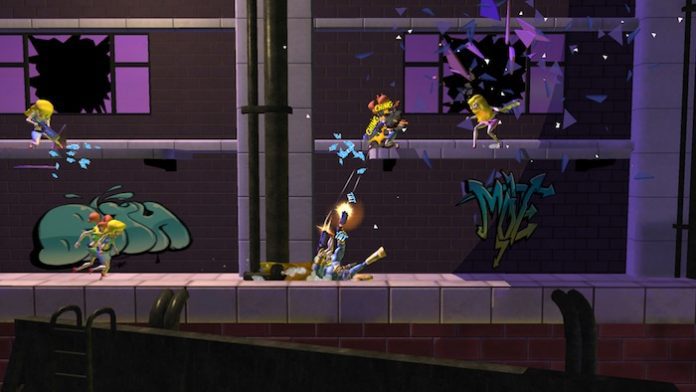Indie games are going to dominate the gaming landscape in 2021. As larger AAA studios continue to face the difficulties of remote operation, and are still being forced to delay new titles for the greater good, indies have found themselves at the forefront of gaming this year. That’s not to say great AAA titles won’t be around—Kena: Bridge of Spirits, Deathloop, Resident Evil Village, and more are on their way—but indies are here to lead.
The next question is: How do we find the indie games we want? AAA studios will always have the money for marketing. In contrast, indies need publishers and other companies to assist with marketing or, alternatively, they can get incredibly creative with budgeting. Companies have tried investing in smaller developers as partners with mixed results, like EA Originals, but one idea that could assist indie developers today is a concept from the past.
With the original Xbox back in 2004, Microsoft spent a bit of time in that year’s E3 conference detailing an idea for gamers to use Xbox Live to download some on-demand “casual games” like Bejeweled, Feeding Frenzy, and others. They called it the Xbox Live Arcade. It launched in November 2004 for the Xbox Live service, with software ordered through discs that could also be bundled with copies of the Official Xbox Magazine.
Originally launching with Hardwood Solitaire, Namco Vintage, Bejeweled, Dangerous Mines, Ricochet Lost Worlds, and Super Collapse II, the service expanded further with another six titles before shifting with the launch of the Xbox 360 in 2005. At the time, it wasn’t much to write home about, as only 27 games were released over the course of that year on the Xbox. But the prices were more than reasonable, ranging from $5-$15, and trials could be downloaded from the store. When the service shifted onto the Xbox 360, Microsoft started making a number of decisions that placed the spotlight on excellent indies.
Microsoft steadily increased the size cap on the service’s games, allowing for indies to add more visually interesting systems. In 2006, the company launched a program known as ‘Xbox Live Arcade Wednesdays’, in which a new game would be released every Wednesday on the platform. The games included added support for Xbox Live’s leaderboards and the company began opting for performance-based curation; if game titles were scoring below 65 on Metacritic and had a less than 6% conversion rate, it could face getting delisted from the service.
The Xbox Live Summer of Arcade, which began in 2008 and continued annually for five years, was a marketing strategy that saw indies released every week with rewards on offer such as getting Microsoft Points back on multiple purchases. For the first Summer of Arcade, there was even a prize draw for 10,000 Microsoft Points, an Xbox 360 Elite, and a few extra months of an Xbox Live subscription. These incentives would encourage players to pick up some remarkable titles. Just in 2008, the promotion saw Castle Crashers, Braid, and Geometry Wars: Retro Evolved 2 released on the service. Many other titles would also emerge over the years: Limbo, Trials HD, Bastion, Shadow Complex, and Brothers: A Tale of Two Sons.
So, why did Microsoft kill Xbox Live Arcade? Amongst all the mini-earthquakes that formed the global disaster of the Xbox One launch in 2013, an overlooked decision was to discontinue the Xbox Live Arcade program in order to have games coalesce in one store. However, levelling out the marketing playing field was a decision that Microsoft should not have made; now indies would have to compete with AAA games without the necessary funding to do so. Indie showcases help, but they hardly get the publicity they need. Although, sometimes, they do get included in big conferences and shine for being so different—like Solar Ash or 12 Minutes.
Indies have historically been the place of genuine creativity in the industry by experimenting within the confines of gaming and consistently playing with the medium. Whether it be through adapting the camera or telling bold and nuanced stories, indie games are always innovative and deserve attention.
Ultimately, Xbox Live Arcade serves as a reminder of how creative the industry can be when larger companies take indie gaming seriously. Studios should do everything they can to amplify these games in order to get players interested and to keep them invested.
Words by Alex Green
This article was published as part of The Indiependent‘s May 2021 magazine edition.
Support The Indiependent
We’re trying to raise £200 a month to help cover our operational costs. This includes our ‘Writer of the Month’ awards, where we recognise the amazing work produced by our contributor team. If you’ve enjoyed reading our site, we’d really appreciate it if you could donate to The Indiependent. Whether you can give £1 or £10, you’d be making a huge difference to our small team.
